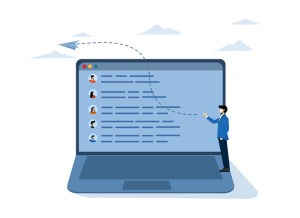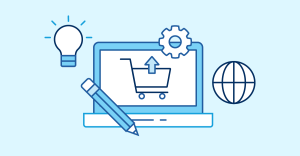In Sales, You Don’t Have To be Convincing, You Have To Be Right



Great sales people don’t have to use trickery or build up remarkable powers of persuasion. They use something far more powerful -- something that’s widely available, but just not always used in the way it should be. We’re talking, of course, about data. Fortunately, there are a number of ways you can fool-proof the way you use data to make more consultative sales.

Salesforce Canada
Great sales people don’t have to use trickery or build up remarkable powers of persuasion. They use something far more powerful — something that’s widely available, but just not always used in the way it should be. We’re talking, of course, about data. This includes data about customers, about the market, about industry trends and more.
It’s not just about having access to data, though. The best sales reps take a thorough, consistent approach to how they collect it, feed it into customer relationship management tools like Sales Cloud, learn more about the opportunities in front of them and provide the most accurate answers to the questions their customers will have. It becomes part of how their managers coach the rest of the sales team too.
Even if a customer or prospect has interest in a purchase, incorrect information about things like feature set, price or other details will almost certainly be a red flag. Get the quote wrong, botch the configuration they wanted or mix up the delivery date and you may lose the deal entirely.
Fortunately, there are a number of ways you can fool-proof the way you use data to make more consultative sales:
Schedule a regular CRM ‘spring cleaning’
Even if your CRM is full of information, certain records may be aging and prone to error, especially if you haven’t connected with the customer in a while. Other details may no longer be relevant but simply remain there out of neglect.
Just as you occasionally need to purge an overstuffed closet of clothes that no longer fit, make the best use of “down time” between meetings or calls to go over customer data that is due for review. Double-check for things like contact names and details, obviously, but also things like budget cycle, purchase history and key challenges or pain points. Cross-check with the marketing team on the last time the customer has been approached or engaged with your firm’s content, advertising or some other tactic.
CRM works best when you keep the data clean. It means you’ll always be right about all the right things.
Synthesize the best information from all over
Beyond CRM data, don’t ignore the unstructured information that might be out there that could ensure you’re bringing customers the most valuable and worthwhile advice.
A good example is social media, where listening tools can arm you with the kind of conversations that bring real-time context to what you already know about a particular customer. This could include a business priority they’re focused on, a new problem they’re encountering and so on.
Another area that often gets missed is in other departments like marketing and customer service teams. These groups are a vital part of the journeys customers take with every company, and when the details of how they interact with them become siloed, reps may find themselves overlooking important feedback or learnings that could improve how they sell.
Use transparency to build trust
Being successful in sales today is not about keeping your cards close to your vest, as it were. On the contrary, customers will respond best to reps who proactively share the information they’re using to recommend a particular product, service, or advice they’re offering as part of a sales conversation. Being open and transparent not only shows you’ve done your homework, but that you’re actively listening, trying to treat customers and prospects as you would a team member in addressing a business issue or need.
When you’re making a pitch, for instance, key facts can be conveyed in simple bullet points, but by offering a quick summary and leaving it open for customers to add or correct details, you’re ensuring that you’re literally on the same page and will come up with the right approach to giving them the help they need.
Weave in data gathering from start to finish
Just as you collect and analyze as much data as possible before connecting with a customer, use the completion of the sale to gather even more. Were there other issues or needs the customer might have later on? Was there any part of the sales (or marketing) experience they had that could be improved? Do they have any non-competitive peers who might have similar needs to their own?
Being data-driven in sales requires ongoing effort, but it’s effort that realizes big dividends over time. You know that saying, ‘the customer is always right?’ Well, customers want — and expect — the sales professionals they deal with to be right, too.
Learn more about The Future of Intelligent Selling: How Data Will Drive Sales get the ebook




















